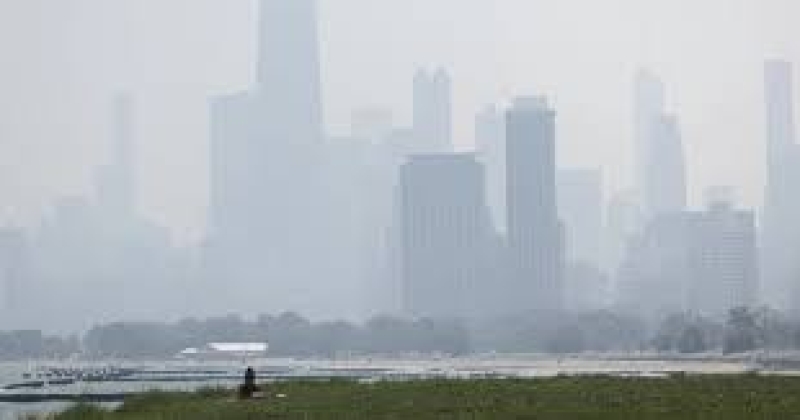- Earthquakes & repeated aftershocks in Dhaka raises concerns |
- Khaleda admitted to Evercare Hospital for health check-up |
- Dhaka records unhealthy air quality on Sunday morning |
- Govt letter to EC to hold election, referendum on same day |
- COP30 boosts funding for at-risk nations but avoids firm fossil fuel terms |
How to protect yourself from wildfire-related air pollution

Smoke from wildfires can travel vast distances and significantly deteriorate air quality far from the fire's source, posing health risks even in areas not directly affected by the flames.
Fires burning in one region can spread smoke across multiple states, and wildfires in Canada have also sent polluted air into U.S. cities. Here's what you need to know to stay safe when air quality worsens due to wildfire smoke:
Understanding bad air quality
The U.S. Environmental Protection Agency (EPA) uses the Air Quality Index (AQI) to rate air pollution. A lower AQI means better air quality:
0–50: Good
51–100: Moderate
101–150: Unhealthy for sensitive groups
Above 150: Unhealthy for all
Sensitive groups include individuals with asthma, lung conditions, or chronic obstructive pulmonary disease (COPD), according to Dr. Sanjay Sethi of the University at Buffalo. “If you have heart or lung problems, then you’ve got to be definitely more careful," he said. Staying indoors or wearing an N95 or at least a dust mask is recommended in such conditions.
How to check your air quality
Sometimes you can see or smell smoke, but even if it's not visible, the air can still be harmful. The EPA provides real-time air quality updates on its website. In addition, PurpleAir offers detailed, hyper-local data through a citizen science-based monitoring network.
For indoor air readings, Joseph Allen of Harvard University’s Healthy Buildings Program suggests buying a low-cost air quality monitor, widely available online.
If you need to go outside
Brief outdoor exposure usually doesn't cause long-term harm for healthy individuals. However, experts recommend wearing an N95 mask, which can block 90–95% of harmful particles.
“If you have a respirator-type mask, that’s even better,” said Jennifer Stowell of Boston University’s Center for Climate and Health. If you start to wheeze or feel short of breath, return indoors or move to an area with cleaner air.
Improving indoor air quality
Keep windows closed and set your air conditioner to circulate indoor air.
Use blankets or towels to seal gaps under doors or around windows where outdoor air might enter.
Upgrade your air conditioner filter to a MERV 13, if possible, and ensure it’s properly installed.
Use a portable air purifier, especially in the room where you spend most of your time.
Stowell emphasized the value of using even a basic room air purifier to reduce indoor pollution, reports UNB.

